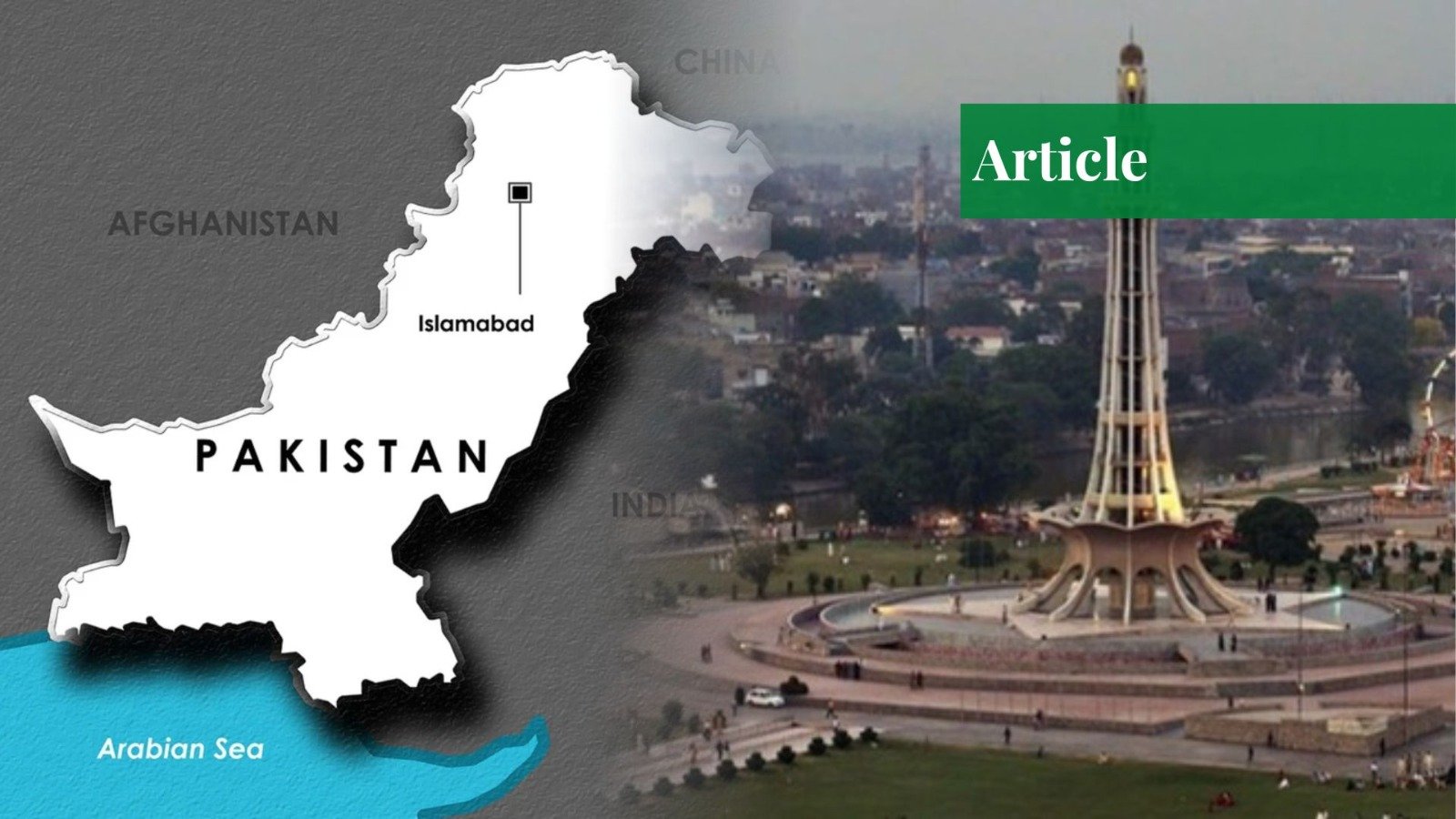Geography is the understanding of the physical features of the world. It explains why some areas are rich in natural resources, why some lands are fertile, and some are barren. It explains the importance of mountains and deserts. It helps us understand how the weather and climate shape the environment, and why some regions experience heavy snowfall while others endure scorching heat. The forests, rivers, and mountain ranges themselves shape the geography. At the micro level, it influences family relations over a division of family land. Apart from this, it has also influenced power, state relations, trade, and strategies. This influence, we generally refer to as geopolitics. In simple terms, almost everyone strives to get better geography, whether it is a state or a person. It is geography that makes one place strategically and economically important.
Tim Marshal, in his book ‘The Prisoner of Geography,’ says that we have always been molded by the land that we live on. The conflicts, authority, politics, and social evolution of the peoples that now occupy almost every region of the planet have all been influenced by it. In general, no geographic component is more significant than any other. Rivers are no more substantial than forests, and mountains are no more important than deserts. Various geographical characteristics are among the main determinants of what individuals may and cannot accomplish in various regions of the world.
The case of Pakistan presents an interesting story to the readers of geography and geopolitics. Pakistan has a remarkable geography in terms of location and resources. Bordering Iran to the west, Afghanistan to the Northwest, China to the North, India to the East, and the Arabian Sea to the South, Pakistan’s geography is strategically vital. It offers China a shorter and strategically safer route through the Arabian Sea, avoiding the vulnerable chokepoint of the Malacca Strait. Pakistan has easy access to the Chinese market, the Central Asian market, and the Indian Ocean, which opens up opportunities to the rest of the world. With a population of almost 240 million, it has the human resources to fulfill all its labor needs and to develop its economy. It can also open up a potential trade route to India once issues are resolved.
Geographically, Pakistan is strategically located in South Asia. From mountains to deserts, from rivers to the ocean, from valleys to cities, and from natural resources to fertile land, Pakistan has been blessed with all the necessary geographical features. However, millions of people still live below the poverty line. Pakistan has agricultural land and the best irrigation system. Unfortunately, still import wheat and other necessary agricultural products from different countries. The country is blessed with many rivers, but they are vulnerable due to the unpleasant relations with India and Afghanistan. For instance, the Kabul River flows from Afghanistan to Pakistan, and the Indus and Jhelum Rivers from IOK to Pakistan. Both India and Afghanistan can use these rivers as weapons against Pakistan. Hence, the geography of these rivers makes Pakistan vulnerable and prone to water scarcity. Moreover, Geography has a significant impact on the relations between states, both positively and negatively. The Kashmir issue between Pakistan and India, and the border issue with Afghanistan, these geographic issues have derailed the relations between these countries from prosperity to tensions and conflicts.
While discussing the geography of a state, we often discuss its borders and its neighbors. At the community level, people sometimes migrate to avoid nasty neighbors. However, a state cannot change its neighbor until it is occupied. It is evident from history that tensions with neighbors always halt growth and prosperity. Pakistan, having India with an almost 1.4 billion population on its eastern border, has all the opportunities to grow its trade with India. However, Kashmir, which is not only a piece of land but a geopolitical asset, has diminished the prospects of good relations between the neighbors. Both countries have fought multiple major wars and skirmishes.
Furthermore, an unstable Afghanistan has been a geopolitical and security issue for Pakistan since its inception. From voting against Pakistan in the UN to the current Taliban setup, both countries have been struggling to form an amicable relationship. This creates more problems for Pakistan on its western border. Tension on its eastern and western borders divides the concentration of the government and the defense forces. Between these borders, Pakistan stretches about 400 to 500 miles. It makes the country vulnerable from two sides, which challenges the strategic depth of the country. Any potential attack from both sides simultaneously can challenge Pakistan’s defenses and strategic depth. Thus, the policymakers have to ensure a timely response to mitigate conflict on both of its borders.
Beyond this, Pakistan has friendly relations with China since its inception. China has proven itself a firm ally in all weathers. The Chinese factor in South Asia draws the US’s attention to Pakistan, and the US would never give up on it. Pakistan’s alliance with China and its borders with Afghanistan and Iran make it a center of attention for the US. Pakistan is not merely an ally of China, but the two nations are also dependent on each other.
Additionally, the recent 10-year defense pact between the US and India reflects the US’s geopolitical alignment against China. Meanwhile, the US is thawing its relationship with the two South Asian nuclear states. This could bring the interest of China to Pakistan to renew its security and defense relations.
Additionally, Pakistan is one of the most climate-prone countries on the planet. Geography gives it enormous opportunities, but it is also subject to great environmental risks. It gets less stable than vulnerable to natural disasters and terrorist intrusion and tensions on its eastern and western borders. As Napoleon famously stated, “Geography is destiny.” Therefore, it can be argued that Pakistan’s geography is both a blessing and a curse, a source of strength and opportunity, yet also a factor that constrains its stability and development.
Geography is not just about physical features; it also preserves history and politics. In Pakistan, its mountains protect its borders and support its glaciers, which feed various rivers, and its borders influence its politics. The country’s strategic location has subjected it to ongoing tension and competition among major powers. Its natural resources and access to the deep sea are crucial for economic growth. However, its climate vulnerabilities and bordering countries limit its peace and development. Therefore, geography governs the course of geopolitical life, shaping security and foreign relations. As history shows, a nation can choose its allies and policies, but not its geography, and in Pakistan’s story, geography remains both the master and the measure of its destiny.
If you want to submit your articles and/or research papers, please visit the Submissions page!
To stay updated with the latest jobs, CSS news, internships, scholarships, and current affairs articles, join our Community Forum!
The views and opinions expressed in this article/paper are the author’s own and do not necessarily reflect the editorial position of Paradigm Shift!



